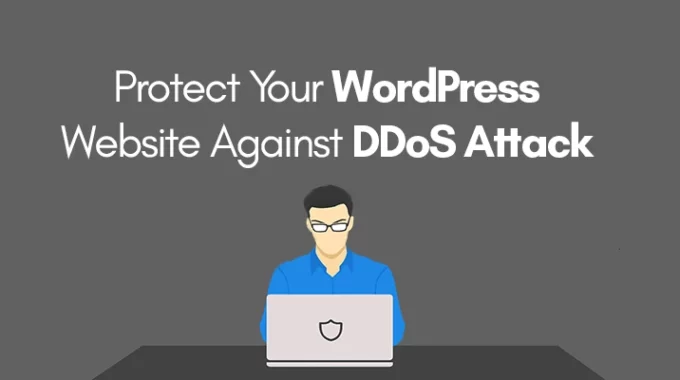By 2023, experts predict that there will have been over 15 million DDoS attacks, up from the 7.9 million recorded in 2018. The fact that DDoS assaults are relatively simple to execute and thus very enticing to cybercriminals worldwide is one cause of this substantial surge.
According to research, DDoS assaults on small organizations can cause losses of up to $120,000, while attacks on enterprises can cost up to $2 million.
Therefore, a DDoS assault can significantly slow down or entirely shut down your online services, including email, websites, and everything else that is connected to the internet, regardless of how big or little your company is.
DDOS Attack: An Overview
A Denial of Service (DoS) attack is a malicious attempt to limit the usability of a targeted system, such as a website or application, to allow end users. Attackers usually generate many requests or packets, which finally overwhelm the target system.
A Distributed Denial of Service (DDoS) attack is one in which the attacker constructs the attack using several sources that have been compromised or are under their control.
A DDoS attack can be classified according to what layer of the Open Systems Interconnection (OSI) model it targets. Most commonly, they can be found in Layers 3 and 4 of the network, Layer 4 of the transport network, Layer 6 of the presentation network, and Layer 7 of the application network.
Different Attacks Under DDOS
When considering mitigation measures, it is helpful to classify these assaults as Infrastructure layer (Layers 3 and 4) and Application Layer (Layers 6 and 7) risks.
Infrastructure Layer Attacks
Infrastructure layer assaults are frequently described as attacks at Layers 3 and 4. These assaults try to overwhelm the network's or the application servers' capacity and are often quite huge in volume. But fortunately, these are the attacks that also have recognizable signs and are simpler to spot.
Application Layer Attacks
Application layer assaults are frequently used to describe attacks at Layers 6 and 7. These attacks are more sophisticated yet less frequent.
Even while the number of these attacks is often lower than that of attacks on the infrastructure layer, they target specific expensive areas of the application, rendering it inaccessible to actual users.
DDoS Prevention Methods
Here are some steps you may take to defend your website or web applications against different DDoS assaults and support the ongoing availability of your website.
1. Increase the bandwidth
One of the most basic measures you can take to protect against DDoS assaults is to make your hosting infrastructure "DDoS resistant." This implies allocating enough bandwidth to handle traffic peaks caused by prospective cyberattacks.
However, keep in mind that only boosting bandwidth is insufficient as a DDoS defence. With more bandwidth, attackers must overcome a bigger hurdle for launching a successful DDoS attack, but you should always use other mitigation measures as well.
2. Use a CDN solution or something
Many cybersecurity measures and technologies are available from multi-CDN CDN providers to safeguard your website from cyberattacks. They offer free SSL certificates.
When you join your website to these service providers, DDoS protection is also instantly supplied to minimize attacks on your server network and application. But it is important to focus on how to get protection from your hosting provider to not leave any room for mistakes.
The fact that when you utilise a CDN network, the port protocol of the CDN will automatically filter out all harmful requests that target L3/L4 and don't access via port 80 and 443 explains this By balancing website traffic, you may prevent your capped server from being overloaded. CDNs disperse your traffic among several servers, making it more difficult for hackers to identify your primary server and begin an attack.
3. Defend your servers against DDoS attacks
You should check with your web host because web hosting firms don't always offer this feature. There are some businesses that offer this service for free, and there are others that charge extra. Hosting plans and providers vary.
4. Prepare for DDoS attacks by anticipating the worst
You can respond quickly to a cyberattack and prevent it from destroying your website by being prepared in advance. A sound cyber security plan includes a list of coworkers who can respond to the attack.
It explains how the system will distribute resources such that most apps and services remain accessible, possibly preventing your business from crashing.
5. Never forget that no one is "too little" to be subjected to a DDoS attack
Many small business owners believe that their company's size is too modest to be vulnerable to cyberattacks. Cybercriminals target small businesses and startups more frequently than they do giant corporations.
This is because larger businesses are typically more likely to install security measures to thwart hacker efforts.
As was previously said, a single DDoS assault on a small firm can cause losses of up to $120,000, thus you should endeavor to make your website more secure as hackers may target it.
6. Use a hybrid or virtualized solution
If you switch to cloud- or hybrid-based services, you won't run out of bandwidth. There are many DDoS-affected websites that are resource-constrained. You can keep yourself protected by switching to a cloud-based service. You can also switch to Cloudflare or Sucuri to prevent yourself from DDoS attacks.
7. Make the settings for your network hardware unbreakable
You can thwart a DDoS assault with a few simple hardware setup changes. You can set up your firewall or router, for example, to ignore incoming ICMP packets or to prevent DNS replies from outside your network. This will help guard against several pings- and DNS-based attacks that target large-scale targets.
Conclusion
DDoS mitigation options should be considered as soon as possible because DDoS attacks have been on the rise and because each attack can have detrimental impacts on any company, regardless of its size or scope.
Using the techniques mentioned above, you can improve your website's security and protect it from intrusions.





